Roll For Insight: Why I’m Not Scared By Horror Games
February 15, 2019 by dracs
I am a coward. This is a truth universally accepted by all who know me. Sit me down in front of a horror movie and twenty minutes later you’ll be trying to dig me out from behind the cushions assuring me the Babadook is not about to eat my soul.
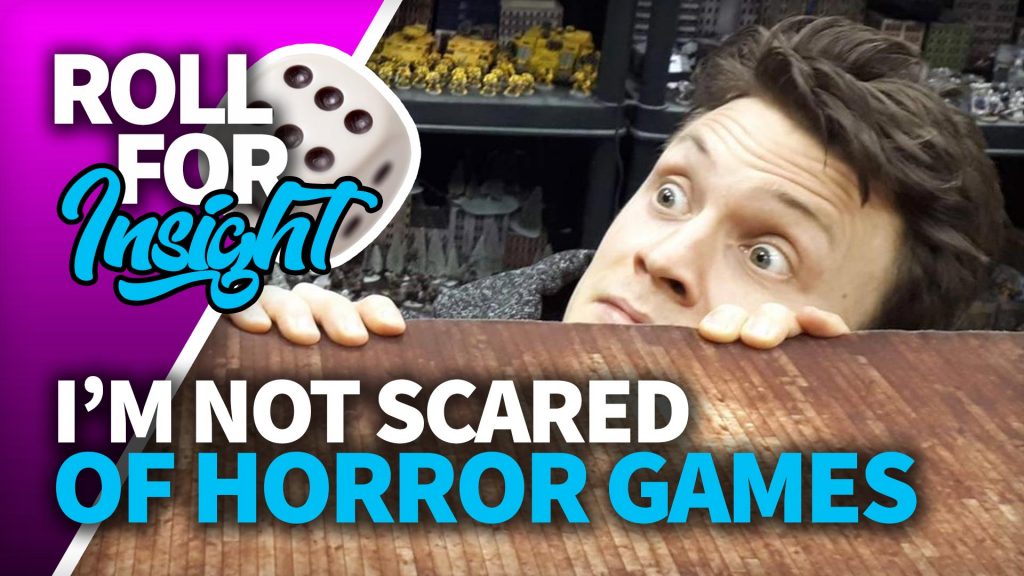
Despite this, or maybe because of it, I have a real fascination with horror. I did my Bachelor’s dissertation on Gothic horror and a lot of the stories I write are horror stories, usually getting the best critical response (which says something for the state of my comedies).
This fascination extends to the tabletop. I love anything that has the trappings of the horror genre, especially gothic horror. If a moon rises above crumbling battlements and a wolf howls mournfully in the woods, then I am going to be all over that.
Tabletop gaming is not short of horror games either, from the roleplaying games of World of Darkness to the never-ending stream of Cthulhu games, horror on the tabletop is well established as a genre. Which has me wondering; with so many games out there, why is it that horror nearly always fails?
The Problem With Tabletop Terror
This is something we brought up on an episode of the XLBS last year when talking about how games can affect us emotionally. When the conversation turned to terror, I was left wondering if any game had actually scared me. I’ve played plenty of games with gruesome imagery, others with big monsters. Many have told a story of small investigators, delving into the mysteries of a haunted mansion. Result: a fun evening with lots of laughs. Which is great! But it’s not exactly horror.
There are plenty of reasons why horror doesn’t always work on the tabletop. The main one is simply down to the nature of tabletop gaming itself; no matter what you do, you are always going to be more divorced from the story being told than you might be with a video game or movie. The mechanics get in the way. The act of having to reach down and move a miniature that you are well aware ISN’T YOU, or stop play to roll a dice and figure out what the results mean, reminds you for a moment that you are playing a game.
This is opposed to a video game, where you have the Wizard of Oz pulling levers behind the curtain (I assume that’s how computers work), maintaining the illusion of smooth, continuous action. This is often to taletop gaming’s advantage, allowing for a more relaxed, social setting, but does get in the way of achieving total immersion, and therefore no feeling of personal vulnerability, that the monster you are fleeing from might actually step into the living room with you.
The other problem is that often games use the trappings of horror, but could not truly be considered a horror game. They use elements of horror, like recognisable monsters and ghosts, but are usually closer to adventure games than ones that make you feel fear.
The game seeks to empower you, focusing on action and combat. Cthulhu games are especially egregious for this. At its core, cosmic horror’s terror comes from how powerless you are. Cthulhu isn’t truly a monster. It’s an embodiment of uncaring entropy, of cold, uncaring forces that don’t simply not care about us, they don’t notice us at all. But put Cthulhu on the tabletop, then sure! Grab your shotgun and magic amulet and head out, you can take him! It might be a difficult fight, but that’s the point; you can fight!
The game seeks to enhance player agency, whereas a lot of horror at its core seeks to remove that agency, or shows that the agency itself is a lie. No matter what choice you make, the killer is going to find you. No matter where you run, the monster is there.
No matter how hard you pray, the demon will invade your very being. You are trapped, overwhelmed, helpless, and at the mercy of something seeking your destruction. But that sort of experience in a board game would be profoundly dissatisfying and one which would not encourage you to return to the game. So we are left with action / adventure games wearing the stitched-together skin of horror games.
Perhaps the place where we get the closest to actual horror is with role playing games. Role playing games have the freedom to be abstract, removed from the tabletop, needing only some stat sheets and a pencil, and sometimes not even that.
With no pieces to worry about, and a mechanics-light system to avoid getting in the way of a story, a good horror role playing game can become something akin to hearing a creepy ghost story.
Bring The Fear
With all that said, there are ways to help evoke horror in your games, ways to leave your players with the feeling of cold fear trickling down their spine. I’ve come up with a few points that, I think, could work to make a true tabletop horror experience.
Manage Your Environment
Which is scarier; playing a through a chilling ghost story with the lights down low, while sepulchral music plays in the background, or playing that same game in the bright warmth of your kitchen with snacks littered across the table?
Setting matters. It helps to establish the atmosphere of the game and delineates the world of the gamespace from that of the everyday norm. Many horror-style RPGs advise players to find a suitable environment for their games. This can be achieved through a couple of different techniques.
First, there’s lighting. We naturally feel safer in bright, well-lit areas. And when playing a horror game, safe is the last thing you want everyone to feel. If you can, try and dim the lighting to a level that is still comfortable to read at, but which leaves you all in a suitable degree of shadow.
White Wolf’s World of Darkness games have suggested playing in a darkened room by the light of flickering candles. Which sounds great, until the eye-strain sets in. But the fact remains that if you set yourself in a small pool of light, surrounded by darkness, you are more likely to feel drawn into the world you are all weaving together.
Second, music. A lot of GM’s like to make use of music playlists during their games. But they have to be suitable for what you are trying to evoke. It’s no use telling a chilling tale while Led Zeppelin, or even Two Steps From Hell, are blaring out in the background.
Keep your music subtle. Don’t let it distract. Often with movies, you won’t even recognise the soundtrack going on in the background of the events on-screen. The same should be true for your own playlists. It doesn’t have to stop there, either. There are plenty of interactive soundboards available, letting you bring in just the sound effect needed for a scene. Some, like Syrenscape, have been made with tabletop gaming specifically in mind.
Lastly, ban out-of-character talk at the table. It’s great to chat with your friends and have a laugh, but that kind of relaxed, fun interaction is not what you want when setting out to run a horror game. You’re here to scare these people! And nothing will kill a tense moment more than someone whipping out a nob joke.
All of this together should help to create an environment that blurs the lines between your game and reality. Which brings me on to my next point.
No One Is Safe!
As I said, one of the things that makes horror scary is that it makes us feel vulnerable. You should aim to replicate this so follow a rule that no one is safe. This doesn’t just mean for the characters, but also the players.
Does this mean you should erect an elaborate Jigsaw-style series of traps that they can only escape by properly participating in a game night? Well, no, but that would make for a pretty terrifying setting, good job! What this means is that you should consider your story and look for ways in which you can blur the lines between what is real and what isn’t.
Consider a game drawing influence from elements of Stephen King’s horror. Maybe the players are all patients taking part in a group writing session. As GM, take on the role of a kindly authority figure, setting them the writing task and guiding the session. After the session, the world changes and they enter a Silent Hill style environment shaped by their writings and featuring their characters twisted by their own psychoses. Now they must delve deeper into this landscape to find out why the worlds are blurring.
There are plenty of places to draw influence from for this. Alan Moore, that luminary graphic novel writer, often writes in his work of how he believes the imaginary to be just as real and impactful as the physical.
The TV show Twin Peaks starts out as a fairly standard murder mystery but uses subtle moments of “wrongness” and dream-logic to leave you wondering what is real and what isn’t. Both the comic books Sandman by Neal Gaiman and The Unwritten by Mike Carey further explore the blurring of the lines between what is real and what isn’t and the relationship between our imagination and our consciousness. And therein lies fertile for some pretty twisted story-telling.
Mechanics
Lastly, what ways can you find to work around the mechanics? The need to stop and roll dice, or figure out what to do next, can bring things to a screeching halt. It’s best to focus on mechanics-light systems. My go to RPG rules set is World of Darkness and its simple use of D10s (though I pretty much took one look at the combat mechanics and threw them out the window). However, the mechanics are still very much there, both helping and hindering the story.
A workable alternative is to use almost no mechanics and for the GM to decide whether something works on not by the simple judgement of whether it helps or hinders the story. You do have to be pretty sure of the GM though, because it is easy for a GM to use this just as an excuse to remove player agency.
Many of us have played in games where a GM will stop players taking actions and, rather than providing a satisfying, narrative reason why, just boils down to “just ‘cuz”. It’s at this point you tend to realise the GM invited the players for the sole purpose of hearing their awesome story, rather than to actively participate in creating it.
An alternative to doing away with mechanics all together is to find a way to get them to add to the game’s tension. The horror RPG Dread is a great example of this. Instead of dice, the success of a player’s actions is decided by playing Jenga.
Now, this might sound like it would immediately pull you out of the horror. After all, jenga is a simple, fun party game. However, the game uses the tension you feel as you slowly try to pull away a block, to wrack up the tension within the game itself. When whether you live or die depends upon your skill to reposition a rickety tower, suddenly that game becomes a heart-pounding experience.
In the end, I think it takes a lot to create a true horror experience for tabletop gaming. There is a lot more I could go into on the subject of themes and using narrative prose effectively, and maybe one day I will, but for the time being, I think I will have to keep looking if I want to actually be frightened by a board game.
On the other hand, maybe I won’t. As I said, I am a coward. I am completely incapable of watching a horror film to the end. Yet I still maintain my macabre fascination with the horror genre and tabletop games have become my preferred way to experience them. If anyone ever did present me with a truly terrifying tabletop game, it might well prove the maxim “be careful what you wish for” frighteningly true.
Have you ever played a game that truly scared you?
What are your tips and techniques for running horror games?
"...why is it that horror nearly always fails?"
Supported by (Turn Off)
Supported by (Turn Off)
"Have you ever played a game that truly scared you?"
Supported by (Turn Off)





























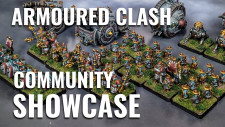











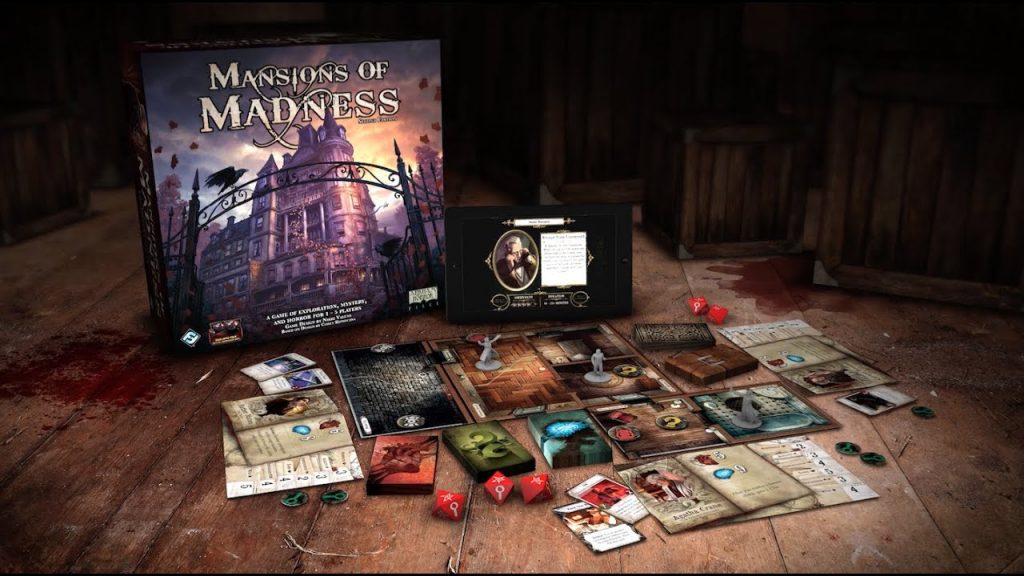


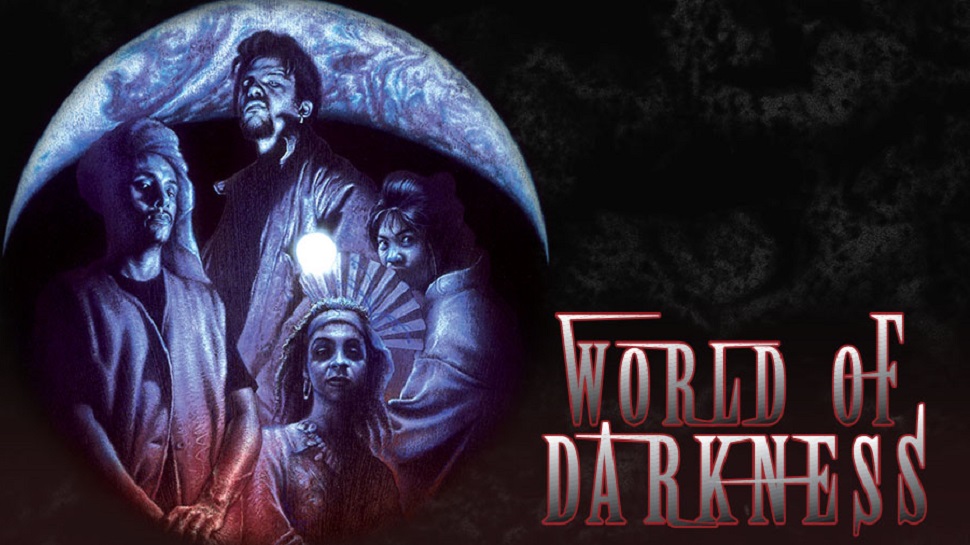
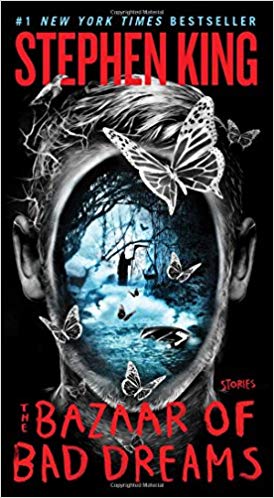

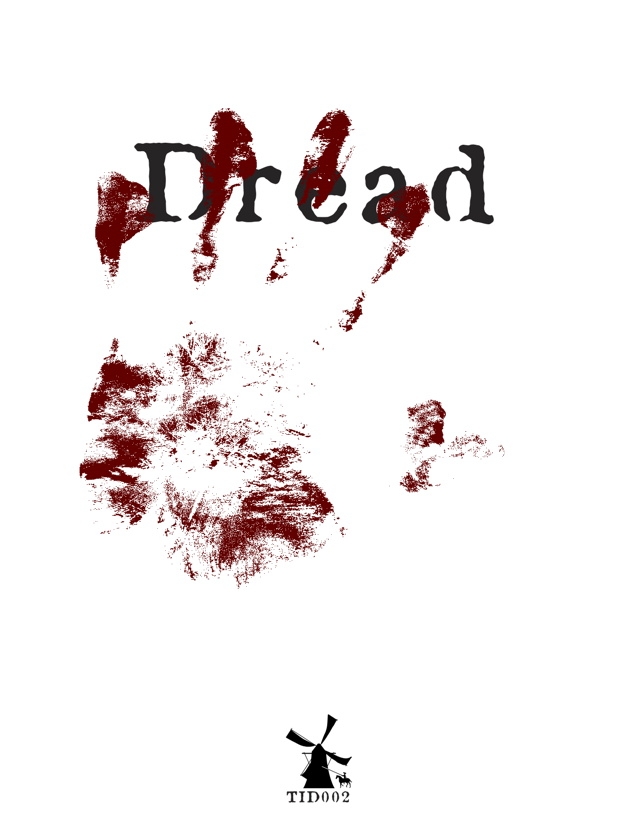


































I think who you play with could also be a factor – I imagine playing a game against @cassn after pressing all her berserk buttons would be a pretty terrifying experience. ?
Also, I imagine @dignity constantly dreads what’s going to come out of @warzan ‘s mouth next. ?
Which is scarier; playing a through a chilling ghost story with the lights down low, while sepulchral music plays in the background, or playing that same game in the bright warmth of your kitchen with snacks littered across the table? Personally I find the first way annoying but I can see how some people like it. Even if everyone buys into it someone will always need to nip to the loo or the shop or pop outside for a smoke which just breaks the whole atmosphere. For RRG’s I’m sure 99% of players can imagine the scenes for themselves without… Read more »
Had I not read your wonderful article I would have said, as my first choices, the right background music and dimmed lights will probably help. Now that you mentioned these I´d say I try to emulate situations and occurances read in books, such as Lovecraft, Howard etc. Maybe even just read out suitable passages.
Btw, have you published some of your horror stories? Where can we possibly get them?
Hey, sorry for the late response, I have been away on holiday. Here are a couple:
The Glass Eyed Girl from Kraxon Magazine (won 2018 short story of the year)
https://www.kraxon.com/the-glass-eyed-girl/
The Face at the Window, published in both Suspense Magazine and the Tales to Terrify Podcast
https://play.acast.com/s/talestoterrify/talestoterrify318samuelpootsrickkennett-chicokidd
So far I read The Glass Eyed Girl and I found it a very good one, especially the rhythm of it. Have you ever considered writing lyrics for music? I think you could quite comfortably do some lyrics from your story. For instance the passage with “a laugh which echoed around the house, and bounced from basement to rafter, the days there were full of laughter, though I didn´t join in”. Part two and three of this phrase even rhyme allready. And “I could not wait to be afraid.” What a chorus!
Remember Atmosphere the board game? At the start you felt an idiot for talking to the telly. By the end, you were a nervous wreck!
Atmosfear. D’oh.
I think part of the problem with ‘horror’ games is that you are expecting it to be scared. And that is kind of tricky to do, because when you look at horror themed movies then the best scares tend to happen after the characters have been lulled into a false sense of security. RPG’s don’t need special rules to do horror. What you really need are players who are invested in their characters and a GM that can convince players that they are ‘safe’ until they aren’t. System wise you could do it in D&D, provided the players trust the… Read more »
I’ve definitely experienced horror playing in RPGs. Mainly live action World of Darkness games rather than tabletop. It helps that your’re participating in a campaign where actions have consequences beyond a single session – and not just for you. It also helps that if you’ve got the right set, props, costumes and players, you can immerse yourself, get into character but because you’re still a real human being you can still feel the horror of being isolated, betrayed, etc. In tabletop gaming I would say that playing through Pandemic Legacy achieves something approaching horror. It’s not horror, but the game… Read more »
I don’t think board games pull you in to the stories like books/films can @dracs
Sounds like someone should get onto making a real life Jumanji to swing the balance the other way. ?
?
I agree that there are certain things that work better in books/film. The terror of Lovecraft was definitely in the building of the scenes and pacing. That I think @dracs did very well in making reference to the “my story/your bit-piece character” type GMs as to how it ends up being worked badly. For film the elements of filters/color palettes/sound/shot angle and focus all have impact on how a piece ends up. These things are structured by director vision and then refined through editors/technicians which your average gaming session will generally lack. On the aspect of horror being able to… Read more »
I don’t think horror lends itself well to games or books, even RPGs. I just can’t get so into it that I feel any personal threat. It works really well in Video Games and movies where you are either providing the action or you can actually see the characters. However as soon as you transfer all that effort purely into the mind, via a book, RPG or Boardgame I think something gets lost